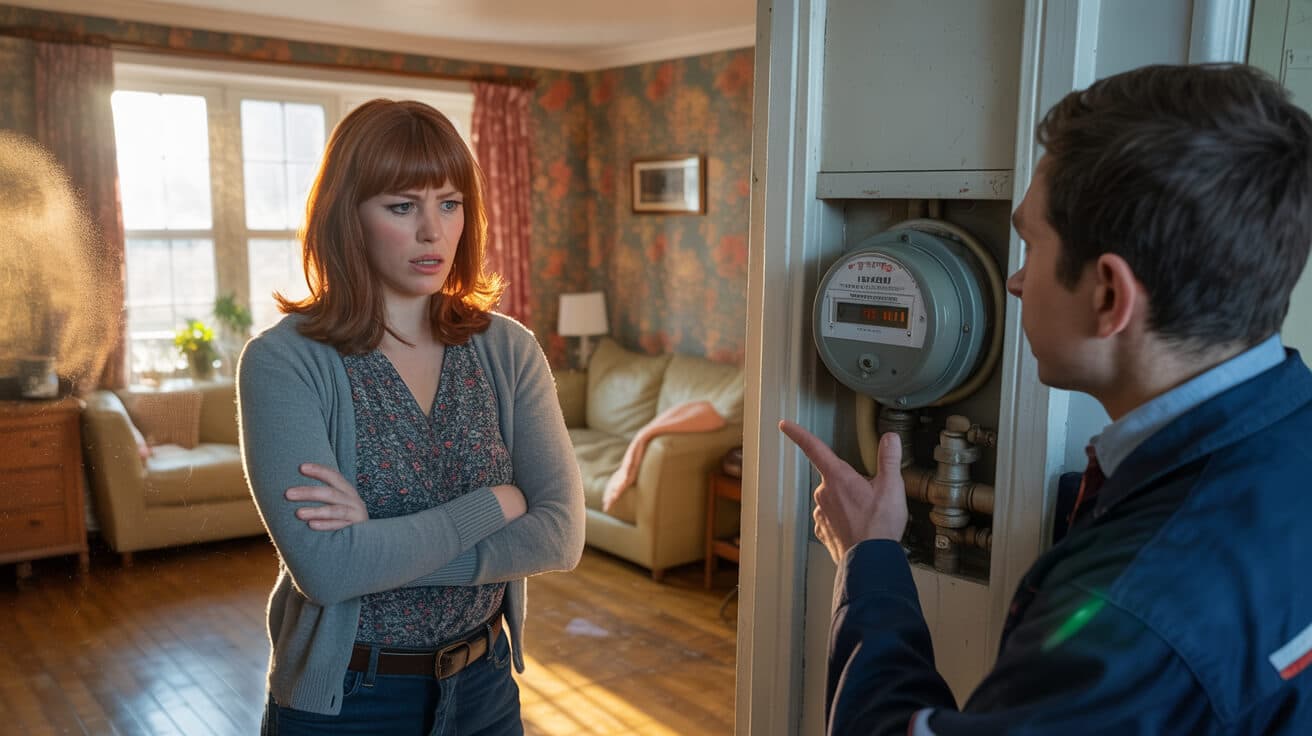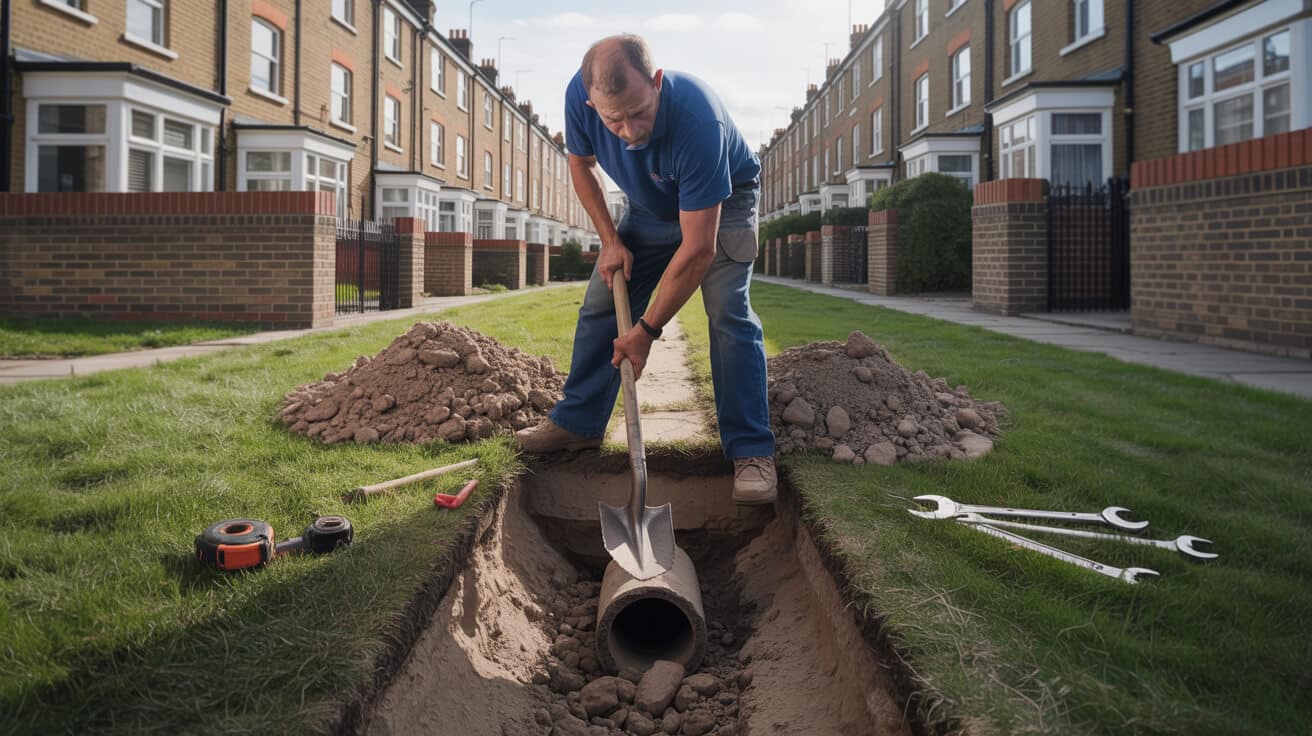 Navigating London’s Planning Permission for Plumbing & Bathrooms
Navigating London’s Planning Permission for Plumbing & Bathrooms
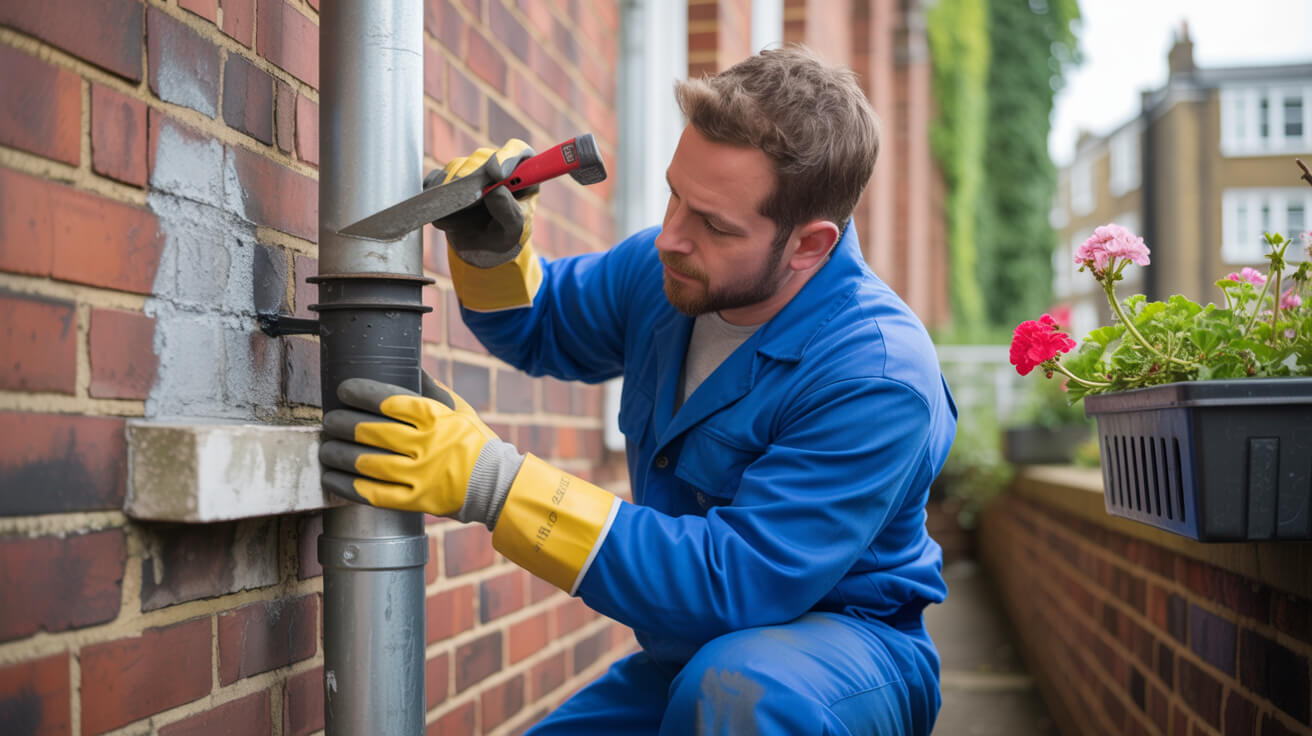
Can You Start Plumbing and Bathroom Works in London Without Planning Permission—or Will You Hit a Hidden Block?
If you own or manage property in London, you quickly learn that every improvement—especially plumbing and bathrooms—faces more than just technical hurdles. The issue isn’t whether a job “needs permission” in the generic sense, but exactly which permissions apply, right down to borough, postcode, property type, or even wall thickness. People who think a bathroom swap is “just internal” discover how quickly a missed step or wrong form can spiral out. In London, what you don’t know may end up holding your project, or even your sale, completely hostage.
Many “like-for-like” internal works, such as swapping a worn tap or basin in the same position, move ahead with hardly a whisper of approval. But in a city packed with Victorian terraces, postwar tower blocks, and ever-expanding conservation areas, a property’s type and address can transform simple jobs into a compliance labyrinth—one that may involve multiple council departments, a freeholder’s blessing, or even heritage consent that few clients realise they need.
Most jobs fail on paperwork, not pipes—one borough’s ‘simple upgrade’ is the next borough’s enforcement notice.
Which Works Need Permission—and Where Are the Pitfalls Lurking?
The “it’s just inside, so we’re fine” line only works on freehold houses, and even then, only for basic fixture swaps. The moment you move a pipe, affect a visible wall, reroute drainage, or instal anything that touches external elevations—even a bathroom window extractor—you usually cross into planning control. In listed buildings, you need consent for almost everything. Shared flats? Freeholder signoff is the start, not the end, and managers often want you to use only pre-vetted engineers to avoid system-wide damage.
- External plumbing works: —soil stacks, waste pipes, new vents—usually need council signoff, especially if visible street-side.
- Listed or conservation properties: Even hidden changes (e.g. pipes under floorboards, new showers, replacement like-for-like) require special permission.
- Structural works: Moving or even partially opening up a wall for a bathroom layout is a trigger for both your local council and sometimes your freeholder.
- Flats, leaseholds, landlord-owned, managed: Written consent from owners or agents is often contractually tied to the lease; skip it, and a future sale might freeze completely.
What passes as “okay” in one postcode may be an instant job-stopper in a neighbouring borough, or if one surveyor asks for evidence you don’t have. No insurance or legal claim can ever recover money spent on work that a council or freeholder orders torn out.
Paperwork delays are silent—until you’re forced to stop, unpick the job, or pay twice to get certified.
Three-Step Permission Assessment for Any Plumbing or Bathroom Upgrade
- Pin down your property’s legal status: Freehold, leasehold, block, house, or commercial? Each brings different rules.
- Check for protected status: Are you listed (Grade I, II*, II), under a conservation order, or within a heritage block? Council and Historic England checkers are your friend.
- Scope and location: External changes, plumbing visible on the building’s outside, or any structural alteration require investigation.
Many clients are shocked when banks, insurers, or agents halt a transaction—not for technical flaws, but for lack of an evidence trail. In practice, skipping permission or failing to keep complete records almost always means paying for the same job more than once.
In a Listed Building or Conservation Area, What Extra Steps Will You Face for Plumbing?

Heritage status in London is never just about external facades: it’s a zero-tolerance regime for unsanctioned change, even if nobody can spot new plumbing unless they rip up your floor or tilework. If your property is Grade I, II, or II listed, or within a conservation zone, every* change may require both generic planning permission and Listed Building Consent.
A listed building’s plumbing is protected—even pipes you can’t see are governed by consent, not just what’s visible from the street.
What Actually Triggers Local Authority Scrutiny?
- Internal layout changes: Rerouting concealed pipework, moving a bath or shower, or installing features not previously in that room.
- Modern finishes or products: Switching from period-correct ware to something contemporary can provoke requests to reinstate originals—even if done “like for like.”
- Converting non-plumbed rooms: Creating a bathroom in a space that never had one is heavily controlled, especially in listed buildings.
- Communal properties: All blocks, mansion flats, or shared freeholds require long paper trails; freeholder/agent consent and often method statements or “licenced” engineer use is compulsory.
Fail to file permission? Enforcement action could demand full reversal—even years later, delaying a sale or breaching insurance conditions. London’s borough planning teams and Historic England portals should be used before booking trades, not after the damage is done. Leaseholders, in particular, are locked into extra document trails: missing a managing agent’s approval not only means legal trouble but often blocks future works.
A missing freeholder sign-off seems trivial—until it freezes a sale or attracts legal fees bigger than your entire bathroom budget.
Protecting Your Project (and Property Value) with Due Diligence
- Employ professionals who understand heritage constraints: —and can provide files for every permission and system touched.
- Insist on written approvals.: Never proceed on a handshake, text, or verbal “that’ll be fine.”
- Be ready for compliance checks: Photos before/after, method statements, lists of every product and material—councils want proof of what’s been altered.
Heritage proof is nearly impossible to forge after the fact. Once authorities have flagged unapproved work, your only choice is to revert everything to pre-job status, sometimes at eye-watering cost.
Why Building Regulations Are Unavoidable—Even for “Simple” London Bathroom Projects
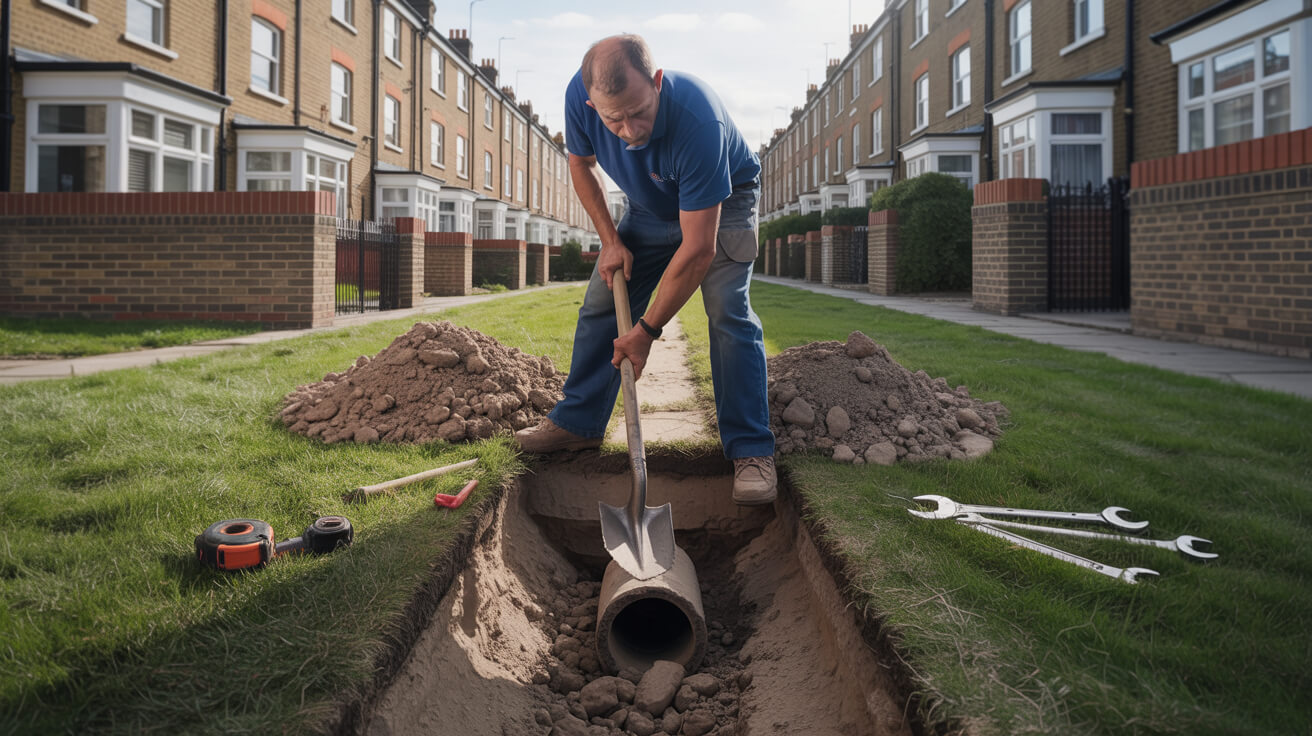
It’s a myth that “internal” work is free from control—every substantial bathroom, plumbing, or wetroom upgrade in London is subject to full Building Regulations. These rules exist to ensure safe water supply, secure drainage, effective ventilation, and electrical safety—making them non-negotiable for professional installations and resale protection alike.
You might not need planning permission for a simple tap swap, but move pipes, fit new drains or electrics, or build a wetroom—and you’re unavoidably in the realm of Parts G (water supply), H (drainage), F (ventilation), and P (electricity) of the Building Regs. Skip even one? You risk much more than a fine: mortgage lenders or buyers will halt sales, tenants may withhold rent, and insurers may void future claims.
A missing or incomplete Building Control certificate can stall a sale just as fast as a disputed boundary or missing title deed.
When Does Building Control Get Involved—and What’s the Cost of Ignoring It?
- Major works: Complete refits, all new pipe or waste runs, unvented cylinder instals, electrics with new circuits, and underfloor heating all demand Building Control involvement.
- Critical ventilation: Any new bathroom or refit—especially those with no openable window—requires a 15 L/s minimum variable-speed fan (Part F). Most DIY kits fail to reach this threshold, risking both discomfort and non-compliance.
- Electrical work: Any change to wiring in “wet zones” (Zones 1 & 2) must be RCD-protected, signed off, and, in most cases, certified by a Part P-qualified professional and checked by Building Control.
If your contractor “forgets” a cert or misses a regulation, sorting it post-job isn’t “just paperwork.” Re-inspection, probing, and in extreme cases, total re-fit may be required—at your own cost. This is an especially common pain point at sale or during landlord certification: “DIY” or “no-paperwork” work nearly always results in costly hold-ups.
It’s the easiest detail to overlook—until a buyer, lender, or letting agent asks for paperwork you don’t have.
Not Every Job Means Inspection—But You Must Know Which Is Which
- No Building Control needed: Like-for-like tap or fixture swaps, where all routes and connections are unchanged.
- Inspection mandatory: Room layout changes, major refits, all electrics beyond basic light swaps, and new bathrooms or kitchens with new plumbing runs.
Professional teams document everything as they go—a full aftercare logbook and photo trail means you’re never exposed to “show us proof” moments at the worst possible time.
Which Compliance Hurdles Trap Most London Bathrooms—And How Do You Beat Them?

In practical terms, compliance in London plumbing is not just about visible neatness; it’s about being able to prove everything was done to legal, technical, and safety standards. When an agent, bank, or future buyer goes looking, a missing certificate, incorrect product, or undocumented fix instantly brings your progress to a halt.
A single missing compliance certificate can derail a six-figure deal for months. Plumbing is about law as much as it is about technical skill.
Where Most Projects Slip Up—and Smart Solutions to Beat the Traps
Here’s a snapshot of the most common obstacles and how you can confidently dodge them:
Introduction: Even smooth instals are stalled by invisible paperwork traps. This table shows what goes wrong and how to guard against it.
| Compliance Hurdle | Required Standard | Typical Failure Point |
|---|---|---|
| WRAS-approved components | Water fittings law | “Off-brand” flex-hoses online |
| Fan rated ≥15 l/s | Building Regs Part F | Boxed-in DIY fans, wrong spec |
| RCD, Part P electrics | Building Regs Part P | Non-registered contractors |
| Drainage fall/venting | Building Regs Part H | Insufficient waste pipe slope |
| Paperwork/Photos/Logs | Handover file required | Contractor doesn’t finish docs |
A compliant instal is both what you see and what you never see: the full suite of paperwork, certificates, brand-model records, and product provenance. Always demand—at time of work, not months later—every file, code, and before/after photo. It’s that file, not just the installed kit, that unlocks the next sale or tenancy.
Is Specialist Involvement Needed for Structural, Electrical, or Party Wall Aspects?
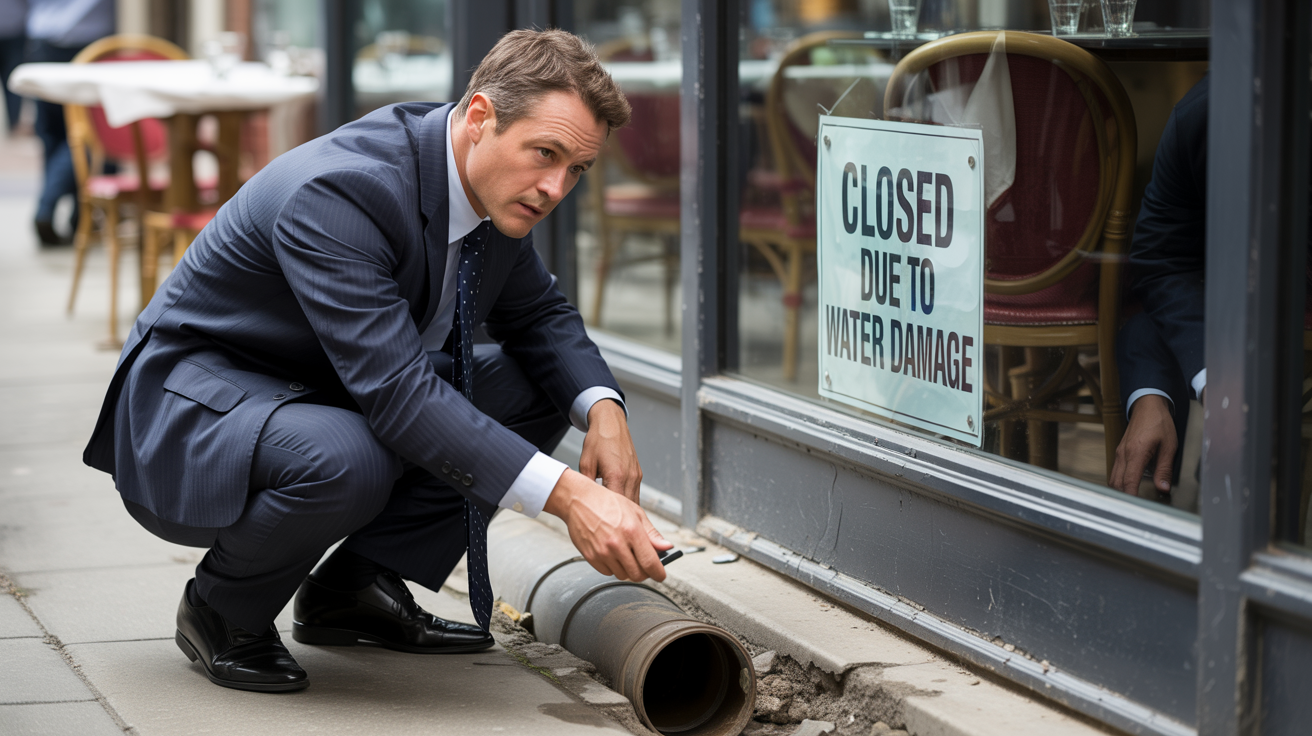
London’s property landscape is crisscrossed by systems and legal boundaries. Jobs that seem like pure plumbing often impact many more disciplines—especially when you touch walls, move water in shared blocks, or handle new electrics. Knowing where plumbing ends and specialist certification begins is what prevents job-stopping surprises.
Specialists are not just for big jobs; even a small ensuite in a flat can trigger party wall law, require structural engineer drawings, or demand a registered electrician for final signoff. Owners and property managers who rely on “one trade does all” thinking risk not just delays but legal liability.
Specialists required if you:
- Alter structure: Any wall removal (even old lath stud), shower wall changes, or load-bearing alteration triggers council engagement.
- Route pipes through shared/party walls: You’ll need both party wall notices and freeholder approval. For flats, professional surveying is often required.
- Instal new circuits or major electric features: Underfloor heating, power showers, and all new wiring in bathrooms is “notifiable” under Part P. Only registered contractors—plus council Building Control—should be used.
Ignoring party wall law or freeholder rules is the fastest way to have a job halted with legal bills. In London blocks, the neighbour and the freeholder have more say than your own schedule.
Missing a Step: The Real Cost
Fail to line up all consents before starting—even with a booked-in plumber and all parts on hand—and the likely outcome is not just a pause, but a total “undo and refit.” Add to this the risk of voided insurance or outright council enforcement, and the lesson is clear: certified professionals are the cheapest way to get the job finished and future-proofed.
The True Price of Skipped Compliance—Delays, Legal Exposure, and Financial Loss
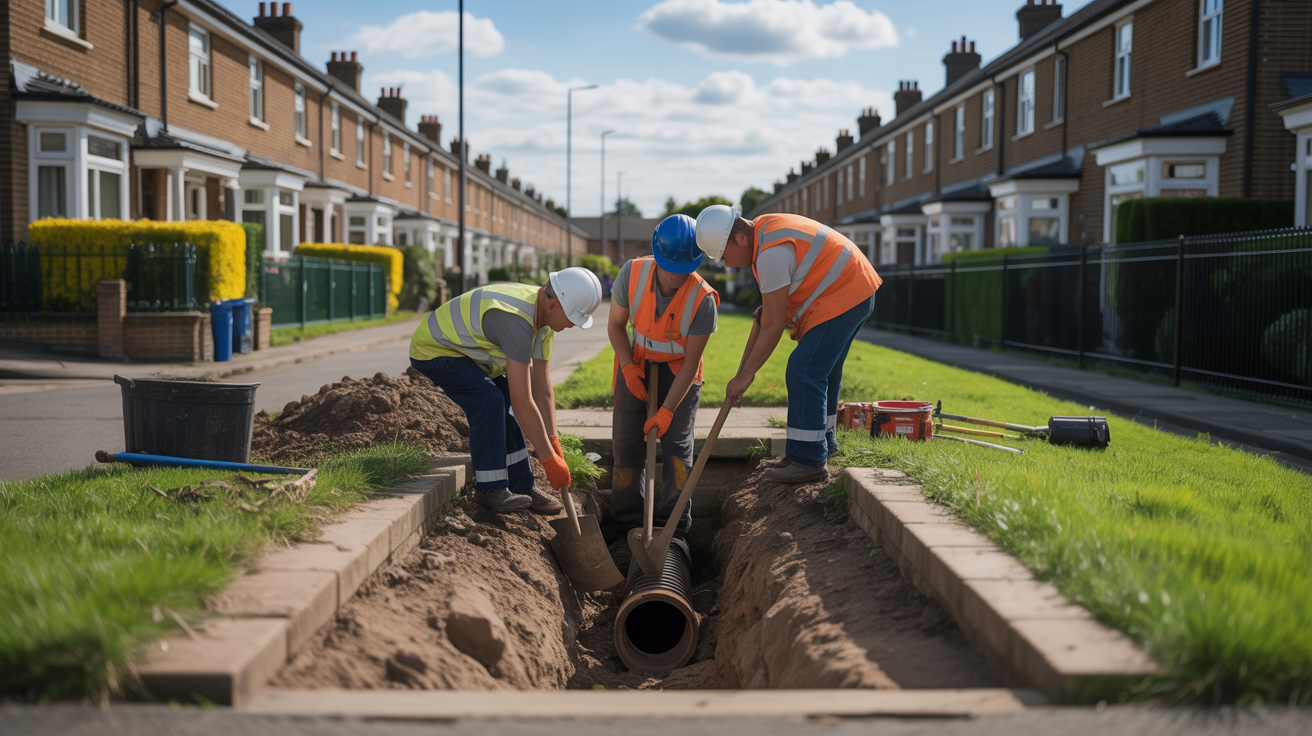
Cutting a paperwork corner or thinking “we’ll fix the forms later” is perhaps the costliest mistake in London property improvement. Defects and compliance lapses stay invisible until a pivotal moment—when selling, remortgaging, seeking an insurance payout, or starting the next round of upgrades. The bill comes due, not as a technical fix, but as a huge delay or direct financial loss.
Paperwork doesn’t leak—but it blocks sales more often than any visible defect in the whole bathroom.
Below: The hidden cost drivers that trip up even “routine” projects.
| Missed Step | Consequence | Typical Cost |
|---|---|---|
| No Building Control cert | Sale or mortgage delayed/blocked | £1,000–£5,000+ |
| Lack of Part P electrical | Insurance denied/rewire required | £200–£1,000 |
| Unapproved components | Leaks/floor failure, forced redo | £300–£3,000 |
| Freeholder/party wall gap | Reversal of works, legal action | £500–£5,000 |
| Missing photographs/docs | Agent/surveyor extra fees, delays | £500–£5,000 |
letting agents, portfolio landlords, and asset managers in the city all share the same warning: No paperwork, no progress. You must anticipate these requirements, or accept that at some point, you’ll be forced to resolve them at double the cost.
Which Documents Make Up a “Sale-Proof” Handover File in London?
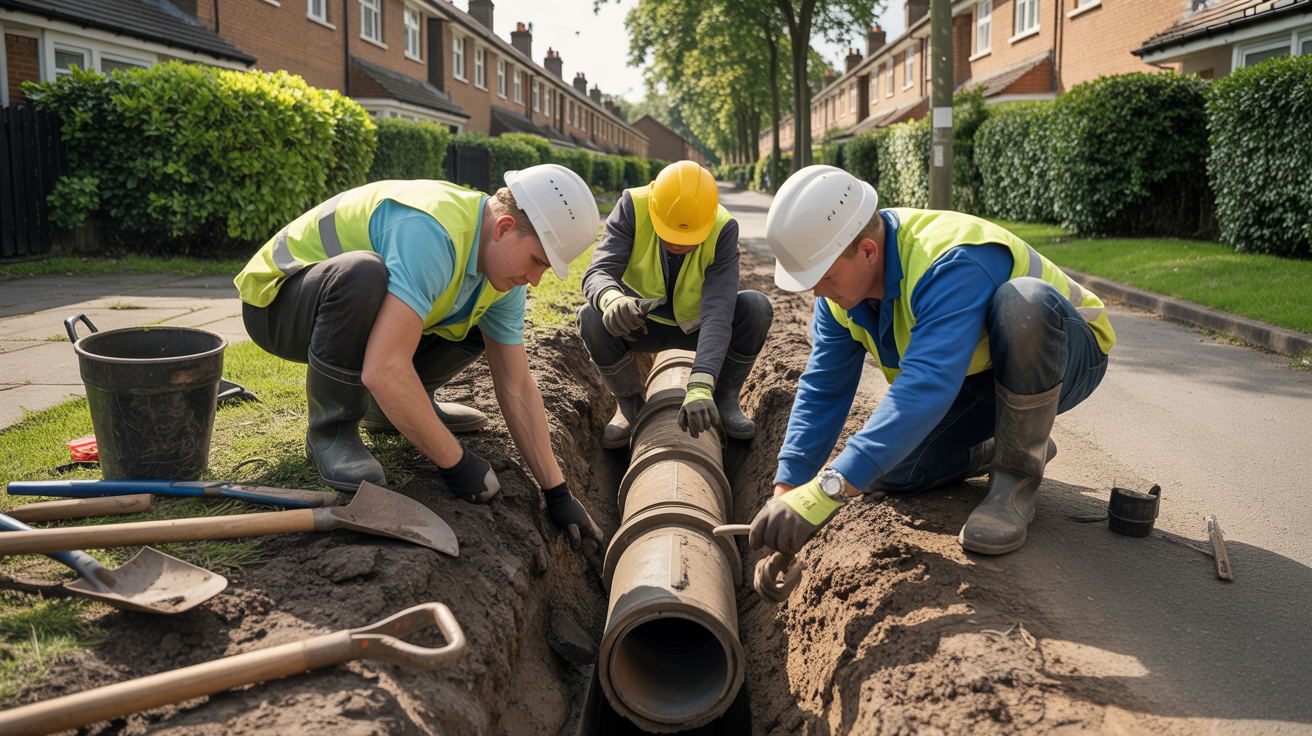
The final curtain on any successful bathroom or plumbing project is not the tap’s shine but the paperwork in the logbook—your property’s passport for sales, rentals, and claims. What is routinely forgotten by DIYers, and too often by some contractors, is that every completed work needs an aftercare file robust enough for the next owner, agent, or insurer to review with confidence.
Anyone can walk into a finished room—but only an organised aftercare file gets you through the sale or letting process with no last-minute surprises.
The Must-Have Compliance File Checklist
A professional aftercare file puts you ahead—every document, manual, and part number should be bundled together, marked with the property and job details.
- Manufacturer datasheets, product serials, and wiring diagrams: covering all installed kit.
- Installer credentials: Engineer’s name, accreditation numbers, business, job date, and direct contact information.
- Originals of all legal paperwork: Building Control signoff, WRAS, electrics (Part P cert), party wall or freeholder letters—scan or store digitally for backup.
- Simple handover diagrams: Isolation valve, stopcock, stat control, vent fan, plus any smart device settings—ready to hand over to new users or tenants.
- Before/after photos: Not just the finished look but everything hidden (under-tile or boxed-in) for proof if a dispute arises.
- Warranty packs and instruction manuals: Keep them physically and digitally with the property log.
Every confident let or sale in London is underpinned by this “invisible” file—without it, you invite rework, extra surveyor scrutiny, or outright collapse of the transaction at the final hurdle.
Why Do Plumbers 4U and Hector Gauge Guarantee No Compliance Headaches?

London’s plumbing supply is crowded, but only a few providers build their reputation on total compliance mastery. Plumbers 4U and certified engineers like Hector Gauge have made “documented, risk-free installation” their entire identity—a rare advantage for property owners, asset managers, and anyone who cares about future-proofing their property.
- WRAS-approved for every part and system: No shortcuts, no off-catalogue substitutions.
- G3-certified on high-risk/unvented cylinders: Full Building Control paperwork, system warranties, and safety for the life of the asset.
- WaterSafe and TrustMark credentials: Installations and repairs that stand up anywhere—lender, council, managing agent, or owner.
- Handover pack by default: Digital file with every certificate, photo, product sheet, and user guidance. Every client knows where their stopcock is, how to check a stat, and what safety settings to monitor.
Choosing a plumber like Hector Gauge isn’t just about the instal. It’s your insurance against risk, claim problems, or future sales delay. You skip the stress.
From heritage flats in Soho to family semis in Ealing and office blocks in Docklands, Plumbers 4U blend technical ability with zero-compromise paperwork. When you want to avoid compliance headwinds—especially in leaseholds, listed buildings, or managed blocks—they’re the only call to make.
Book Compliance-Safe Plumbing and Bathroom Works with Plumbers 4U Today
What you’re really buying in London isn’t just a beautifully finished bathroom or flawless system—it’s certainty. Every successful property upgrade starts with full legal alignment and ends with a logbook of paperwork that defends your asset for years after the last tile is laid. With Plumbers 4U and Hector Gauge, you get more than a top-standard job: you gain a warranty backed by complete documentation and a path cleared through council, surveyor, or buyer questions—whenever they arise.
When you book with Plumbers 4U, you protect your future as much as your plumbing. Fast, WRAS and G3-compliant, WaterSafe-registered, and always aftercare-inclusive. That’s how you safeguard property value, ensure insurance claims pay out, and sleep soundly during the next sale—or whatever curveball London regulation throws your way.
Compliance isn’t a detail; it’s peace of mind. Make every upgrade a future asset, not a hidden liability—choose the team who guarantees you both.
Ready to bring your project 100% up to code? Request a pre-works assessment and let Hector Gauge—WRAS, WaterSafe, and G3-certified—build you a compliance plan that meets every council, lender, or agent’s standards. Your future self—and your property—will thank you.
Frequently Asked Questions
What triggers plumbing permissions in London properties, and why do requirements differ for flats, houses, and heritage homes?
Plumbing permissions in London depend on property type, historic status, and building management structures—internal upgrades rarely need council sign-off, but flats, heritage homes, and communal systems trigger extra scrutiny before you can legally start work.
Council permission is rarely needed for straightforward internal swaps—such as replacing taps or showers—if you’re in a freehold house outside a conservation area and the work won’t affect the structure or shared infrastructure. Where the landscape shifts is if you own a flat or maisonette: leasehold covenants or managing agents demand written permission before any alteration, regardless of how minor it appears. If the job alters anything shared—soil stacks, water risers, or vent pipes—you may face double sign-off: once from block management, again from the local authority. For homes within conservation areas or those that are listed, even basic plumbing tasks like moving a waste pipe can require conservation consent or Listed Building Permission on top of standard planning.
It’s not the taps or the tiles—it’s missed signatures and overlooked covenants that spike your project costs and stall timelines in London blocks.
Which overlooked triggers block projects?
- Flats: A tap change that affects supply to other properties risks lease or block manager opposition—even if it seems “like-for-like.”
- Listed homes: Even minor alterations can fall under heritage controls, risking fines or forced reversals if ignored.
- Communal drainage or venting: Any works that touch shared infrastructure need dual checks—council and building, sometimes Thames Water too.
- Private estates: By-laws and covenants in ex-local authority or private blocks can require group approvals or block-wide consultation.
A property audit before you start—focused on leasehold rights, freeholder sign-off, and property status—cuts surprises and legal risks. Plumbers 4U map all triggers before quoting, so your schedule and budget stay on course.
How do building regulations and planning permission each influence London plumbing projects?
Building regulations decide how your plumbing work must be completed—ensuring safe installation, compliant drainage, correct temperature settings, and appropriate materials—while planning permission decides if you can alter certain features at all, especially if your project affects a property’s exterior or structure.
Most upgrades fall within the realm of building regulations: new bathrooms, pipe runs, or hot water cylinder instals must all meet standards for safety and efficiency. Planning permission steps in if you wish to extend, attach external pipework, or modify a listed building. A key misconception: passing a technical safety check does not mean you have legal cover for the work—if your job needed permission but didn’t get it, insurers or the council can still demand remedial work or void coverage.
London’s legal safety net is twofold: even perfect workmanship gets undone if the approval process was skipped—paperwork is king.
Points of confusion for property owners
- Internal-only projects: building regulations apply, but not always planning.
- Anything visible outside: nearly always needs planning, plus building regs.
- Hot water cylinders, wet rooms, or new electrics: always use certified tradespeople with the ability to self-certify or notify Building Control.
Working with a firm like Plumbers 4U—able to self-certify under WRAS, G3, and WaterSafe schemes—means you’ll satisfy both strands seamlessly, and you minimise your risk of paperwork coming back to bite.
Why do permission requirements escalate for London flats, listed buildings, and communal properties compared to houses?
Houses usually let you handle much of your own plumbing, provided you follow regulations and your work is internal. In flats and leasehold buildings, every step requires layers of written consent. Not only do you answer to your landlord or freeholder, but block management rules can also stall progress—even if you’re approved by Building Control or the local council. If the upgrade might impact structure, communal areas, or shared water stacks, leaseholder engagement is sometimes mandated.
For listed properties or those in conservation zones, historic overlays mean every fixture, pipe, and sometimes even the colour of a new radiator valve is subject to review. Cosmetic freedom is sacrificed for preservation. Communal systems in mansion flats or ex-council blocks add one last twist: works that touch shared valves, risers, or ventilation may need group sign-off and block by-law compliance, with non-compliance risking forced removal.
Overview: Who decides permissions by property
| Property Category | Approving Parties | Additional Notes |
|---|---|---|
| Freehold House | Council for extensions/external, B.C. | Listed/conservation bring heritage review |
| Flat/Leasehold | Freeholder/Block, B.C., Council (as needed) | Party wall or ‘build-over’ consents may apply |
| Listed or Communal | Planning, Heritage Team, Block/Manager | Routine upgrades treated as notifiable works |
Plumbers 4U are trusted by agents and block managers to handle this maze—delivering both the skills and the admin trail so that you and your neighbours stay in the clear.
What sequence should you follow for full compliance on a London bathroom or plumbing upgrade?
Achieving legal sign-off for a plumbing upgrade in London starts well before the first tool is unpacked. Map your property’s permissions profile: is it freehold, leasehold, listed, or in a conservation area? Build a detailed scope—what you plan to change, which fixtures, where pipes will run. Gather necessary consents in the correct order: always get approval from your freeholder or block manager first if you’re in a flat. Then, check local Building Control thresholds and planning overlays for works that might extend outside or cross a legal or structural boundary.
For listed buildings or conservation areas, file consent applications early—these processes often stretch well beyond a contractor’s timeline. Document every discussion, keep meeting notes and written permissions, and store them in a digital folder along with site photos and model/part numbers for every new fixture.
At completion, make sure your installer issues the signed certificates required by Building Control, your freeholder (if needed), and, where relevant, the heritage office. Engage only certified, compliance-minded professionals; Plumbers 4U close the loop by archiving every paper, certificate, and approval ready for sale, claim, or survey.
A digital permission trail is your best asset—protecting your spend now and unlocking value at future sale or remortgage.
Step-by-step: Bulletproofing your project’s permission process
- Scope the works—record photos and part details
- Verify property status (flat, freehold, listed, conservation)
- Obtain written block/freeholder consent if not freehold
- Check planning overlays and Building Control thresholds
- File additional consents for heritage or communal areas
- Use engineers who provide self-certification paperwork (WRAS, G3, WaterSafe)
- Maintain a full job archive (certificates, consents, photos)
- Never release payment until all paperwork is supplied
Who provides the final sign-off on London plumbing—and when does self-certification by your installer apply?
Responsibility for sign-off rests on property type, the upgrade’s complexity, and local overlays. Large jobs (aside from routine tap fixes)—like full bathroom refits, new hot water systems, or structural rerouting—must be closed out by local authority Building Control, who’ll issue a completion certificate. But London also recognises self-certification for many routine works: WRAS-approved plumbers, G3-certified engineers for unvented cylinders, and WaterSafe members may certify parts of the job, often sidestepping council inspection for those elements.
Electrical works in wet rooms always require sign-off from a Part P-registered electrician—council approval alone won’t suffice. In flats and mansion blocks, managing agents or RTM companies may hold the right to inspect and accept or reject works independently, and their written sign-off is needed for compliance. Heritage or listed jobs require inclusion on the public approval register.
Table: Final sign-off by work type
| Work Type | Who Signs Off | Certification |
|---|---|---|
| Routine Internal (House) | Building Control, Installer | Self-cert (WRAS/WaterSafe) |
| Flat or Managed Block | Manager, Installer, B.C. | Written block consent |
| New Unvented Cylinder | G3 Cert., Building Control | G3 paperwork |
| Wet Room Electrics | Part P Electrician | Part P cert, archive |
| Heritage/Listed Works | Council/Heritage, Installer | Listed approval |
Always demand originals (not just “it’s fine” calls or texts) for every sign-off—Plumbers 4U standardise this process so protection is built-in from the start.
What happens if you skip permissions or misplace your plumbing compliance paperwork in London?
Failing to obtain permission or losing documentation isn’t a paperwork issue—it directly threatens property value, legal standing, and financial security. When you skip Building Control or freeholder sign-off, a solicitor can block a sale, a mortgage can be refused overnight, and insurance claims for leaks or faults may be voided without warning. Even years later, block managers can request removal of unauthorised works or pursue fines, turning a “routine” upgrade into a costly reversal.
Leasehold and communal properties carry the highest risks: missing even a minor consent can empower neighbours or the freeholder to escalate disputes, sometimes forcing legal action or retrospective approval at great expense. Without certificates documenting compliant installation, any warranty, insurance, or subsequent surveyor’s report is at risk—future buyers will walk if the paper trail is missing.
More projects are tripped by missing or ambiguous paperwork than by any technical snag. Trusted owners make the archive as robust as the installation.
Key consequences: Typical fallout by missing permission
- Sale falls through—buyer’s solicitor or surveyor flags a missing building cert
- Insurance refuses payout when a leak or water damage surfaces
- Block manager or freeholder demands costly remediation or fines
- Retrospective consent or approval needed at your expense
- Mortgage application denied or delayed
- Neighbour injunction issued for Party Wall lapses
Working with Plumbers 4U ensures permissions are chased, consents logged, and you hold a future-proof digital copy of every cert and archive—reducing your risks for as long as you own the property.

